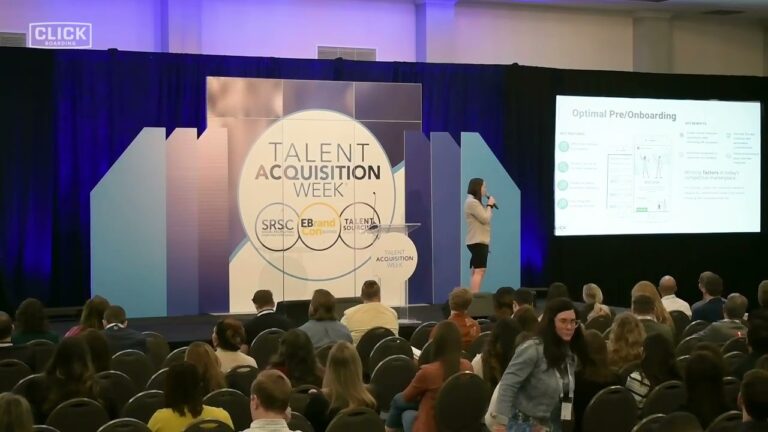The disruption in HR
At the beginning of the pandemic in early 2020, HR teams became the first responders to the chaos… by default. Fast forward two-plus years of pervasive, seemingly endless change, and HR teams remain at the helm. They’re keeping their organizations operating the very best they can, cautiously navigating the many twists, turns, and troubled waters the global health crisis triggered. But throughout this profound disruption in HR, the inevitable is finally happening.
Sadly but realistically, the collective impact of COVID-19 has been not only “disruptive” but devastating to HR leaders, practitioners, and advocates alike. Repeatedly, they’ve felt the pandemic’s ripple effects across the business – from layoffs and furloughs to the many challenges of hybrid work (and everything in between).
HR is struggling…badly
HR burnout is at an all-time high, with HR job postings up over 130% compared to pre-COVID numbers and fewer resources than ever. As HR teams are faced with having to do more with less, HR burnout is compounded. Furthermore, HR Executive Magazine published a recent survey revealing that 2020 was “the most stressful year of their career” for HR professionals, at every level and every tenure.
Finally, HRE’s annual “What’s Keeping HR Up at Night?” survey uncovered an overwhelming 86% of HR practitioners felt 2021 was even worse than 2020. That’s why it comes as no surprise that the team most depended upon by the organization is exhausted. And whilst massive employee turnover spiders its way throughout the business, HR is looking at a Great Resignation of its own.
Causes of the HR disruption
Adding insult to injury, the struggles and disruption in HR are coupled with an alarming statistic: the April 2022 Gallup study shows employee engagement “…saw its first annual decline in a decade, dropping from 36% engaged employees in 2020 to 34% in 2021.”
Rife with disruption across the business, the curveballs thrown at HR during the pandemic have created extensive burnout and exhaustion. In fact, SHRM.org data indicates 42% of HR teams are “struggling under the weight of too many projects and responsibilities.” From mundane tasks that add little value for passionate employees wanting meaningful work or ensuring new hires are onboarded correctly and compliantly, the disruption in HR has reached a boiling point.
Further complicating the issue, employees have expressed a number of additional problems they feel contributed to the sharp decline in their engagement. Gallup says engagement is down because employees:
- Do not have clearly defined expectations from their manager.
- With priorities shifting, we must meet employees where they are to help them achieve fulfillment at work.
- Lack the technology, support, resources, and tools.
- The right tech stack allows companies to deliver the best experiences, including optimal onboarding. Without it, teams end up babysitting across disjointed channels for a disconnected employee experience.
- Are not given the chance to do what they do best.
- Your new hires want human-centered work that’s not only strategic but also visionary. They’re not interested in mindless, monotonous work that’s fit for a robot.
“Your employees are your biggest asset”
The old adage rings true, particularly right now. Leaders are at the mercy of employees who will walk out the door if their basic needs are not being met and find employment elsewhere. Whether management is unable or unwilling to meet employee demands, the bottom line is they’re losing talent… in droves.
As your biggest asset, treat employees like real humans, with meaningful human-centered work. Old, antiquated technology is just that: outdated and not in line with today’s complex problems. Case in point: Walmart, Chevron, and The Lego Group were showcased in May 2022 for providing their employees with “cutting-edge HR services, new HR solutions, and new ways to train and retain workers.”
The biggest HR disruption challenges
Disruptive influences like the acute disarray born of COVID-19 have caused endless waves of change throughout organizational ecosystems. Although embracing change in a pandemic can seem almost unfathomable, employers who are committed to supporting their employees – their biggest asset – will undoubtedly rule the talent roost.
Click Boarding’s Head of Marketing, Michelle Graham, says it’s not just about your employees. “It goes well beyond your people, with the need to address the technology at their fingertips.” Graham’s statement can be validated by data from PwC’s HR Tech Survey 2022. The survey confirms that HR has a host of tech stack challenges to overcome in the pandemic’s wake. In addition to these challenges, HR professionals also face a challenging recruiting environment.
Despite it “meeting expectations and creating value for both HR and the business,” survey data uncovered key areas HR leaders could improve upon, including:
- 39% HR insights & data analytics
- 36% Cloud transformation & HR system modernization
Disruption doesn’t have to mean despair
In order for businesses to successfully navigate all this change, a refreshed and better-equipped HR is the solution to the problem. But how can such lofty goals be achieved when the profundity of HR’s challenges seems almost irreparable after suffering the carnage of COVID?
The quandary many enterprise companies are faced with today boils down to managing “the legacy organization while planning for the needs of the future.” This is no small undertaking and requires not only forethought but also a realistic acknowledgment of older HR tech solutions. Bridging the gap from one generation’s HR tech to another is vital for organizations to modernize their business and thrive in the new digital age. We’re at a paramount crossroads of HR contributions that not only drive impact but change as well…for today and tomorrow.
So how can the disruption in HR be reduced with a future-forward stance on HR tech? You trust an HR tech leader who delivers award-winning, best-in-breed solutions. As a leader in automated onboarding, Click Boarding understands and empathizes with the disruption, monotony, and overwork HR teams are experiencing.
Graham says leaders need to examine the exhaustive list of daily HR tasks and responsibilities to understand the root cause of the most friction or turmoil HR feels today.” We’re here to argue it starts the moment your new employees join the organization. So, why not start with the lowest hanging fruit to tackle your new, doe-eyed employees as they enter your organization?” Graham stresses the importance and long-ranging impact of giving new employees a positive experience, from Day 0 onward. “It’s time to give your HR heroes a win,” she exclaimed.
A quick win…for everyone involved
For years, reputable associations like SHRM.org and AIHR Academy have underscored the importance of employee onboarding, and it’s never been more critical than it is today. That’s why you need to get onboarding right the first time. If you don’t, you’ll risk watching your top talent hightail it out the door.
But how do you rejuvenate fatigued HR teams trying to navigate such unscripted, uncharted territory? How can they be expected to onboard your new hires and get them excited about joining the team if they themselves are buried with too much work and too many tasks? It’s a simple solution: by removing the mundane, tedious work from the HR workflow equation… with automation.
And what’s one of the most important things HR can give new employees? An engaging, memorable onboarding experience.
That’s why with automated onboarding, you’re investing not only in HR’s sanity but also in the future and retention of your new hires. You’re providing them with purpose and a stronger focus for meaningful projects.
Don’t think automated onboarding makes a difference? Well, you’d better think again. Automations for employee onboarding increased an unbelievable 256% in the last year alone! It’s why an automated, mobile-first onboarding process for both in-person, remote, and hybrid employees is vital to your organization’s productivity and ultimately, its success.
After the past 18 months, your HR team deserves a little sanity. Revive your wearied, worn, and uninspired team; protect them from HR burnout. With a refreshed perspective to offer, they can focus on valuable work that impacts the bottom line. Once the din and disruption in HR is reduced, they can think clearly once again.
Discover how to stop the disruption
Ready to learn how Click’s automated employee journey platform helps alleviate disruption in HR and retain top employees? Download our Infographic – Steps to Tackle HR Burnout and Prevent Disruption
Need help improving your employee experience through automation and efficiency? Learn More about Click Boarding!




